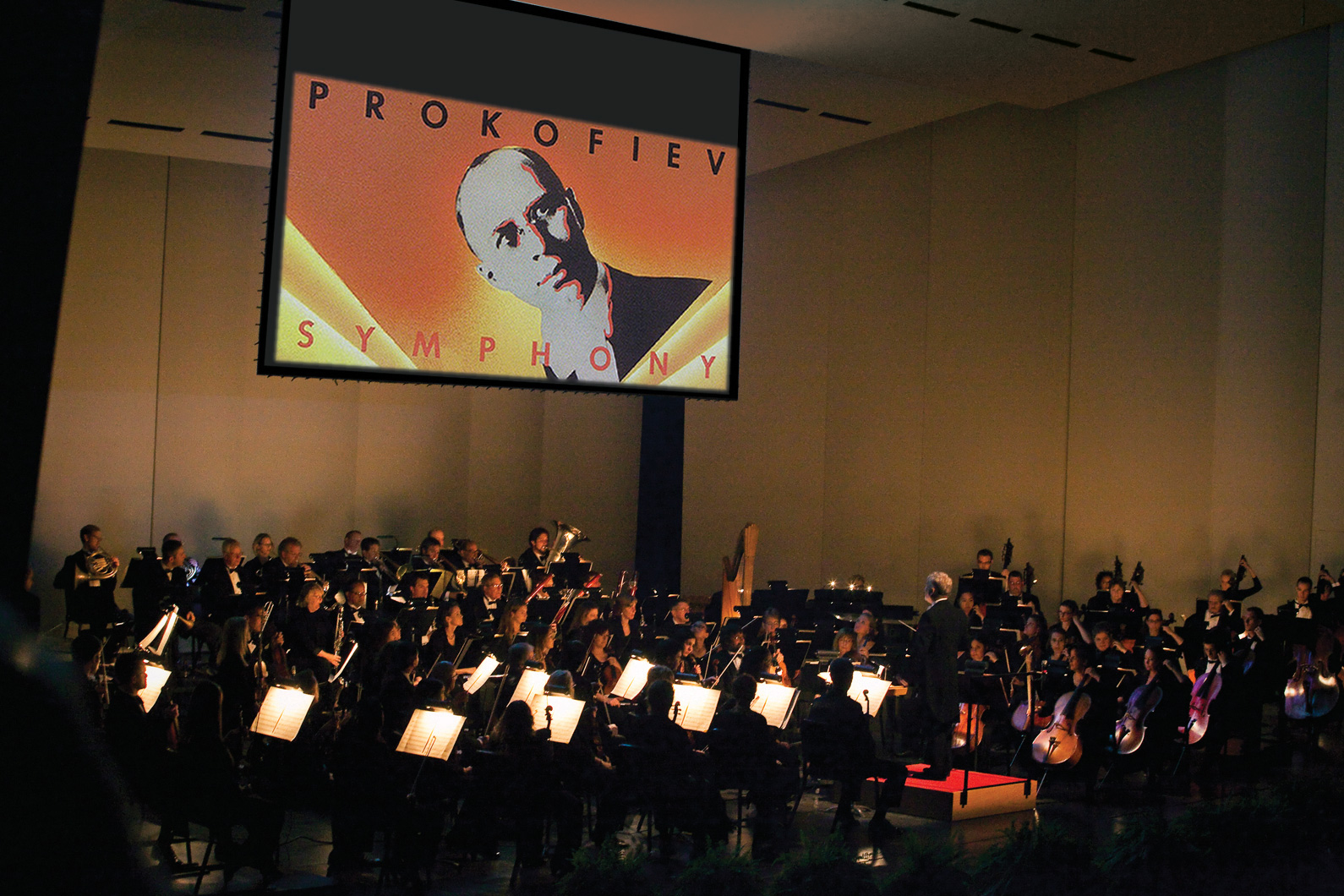“What does the end of a fairy-tale sound like?” muses the actor William Dick in his portrayal of Russian composer Sergei Prokofiev for the Des Moines Symphony‘s performance of Prokofiev’s Symphony No. 5 – Beyond the Score: Pure Propaganda? It is clear from the portrayal of the composer that he would have wished for a world in which the fairy-tale never actually ends. This inherent optimism shone through in the Beyond the Score presentation as well as the Symphony’s performance on Saturday night at the Des Moines Civic Center under the baton of Maestro Joseph Giunta.

Beyond the Score
Chicago Symphony Orchestra‘s ever-expanding Beyond the Score program, which originated in 2005, is a fantastic audience development tool. The format features theatrical narrative performed eloquently by William Dick, Sarah Hinzman, Jill Shellabarger, and Roger Mueller – a remembered favorite from last year’s Beyond the Score production of Beethoven Symphony No. 5. Adding to the narration are instructive and illuminating musical excerpts performed by the Symphony. All of which accentuated with hand-paced projections providing both more visual interest and historical context. This particular program gave a surprising amount of insight into Prokofiev’s life; and furthermore, into his compositional process, the lives and works of other notable Russian composers from Mussorgsky to Shostakovich, and the historical context in which Prokofiev was writing. This type of program runs the risk of offending those who constantly admonish others to ‘let the music speak for itself.’ However, it is humbling (and yet, restorative) to be reminded through music of times not so long ago in which our world also faced fear and terror fueled by hatred.
Prokofiev Symphony No. 5 in B-flat Major, Op. 100 (1945)
The eminently singable melodies are the hallmark of Prokofiev’s Fifth Symphony and the Des Moines Symphony displayed commitment to highlighting each in its own richness. The careful balance of lower strings allowed the first sweeping melody of the Andante, played by flutist Kayla Burggraf and bassoonist Kevin Judge, to soar over the rest of the texture. Likewise, the regard and thoughtfulness towards balance allowed solo themes from clarinetist Gregory Oakes and oboist Jennifer Wohlenhaus to command attention in the Allegro giocoso finale. To this taste, the brass articulations in early soli sections were lacking in clarity. As the intensity heightened in both the first and final movements though, the brass and the percussion sounds unquestionably blossomed. The work of Aaron Williams, Robert Meunier, Thomas Mackey, and Michael Geary was particularly thrilling in the Andante. While there were some surprisingly anemic moments in the Adagio, this did not extend into the incredible buildup of tension and brilliance in the Allegro giocoso finale coda.
The Prokofiev optimism, the sounds of fairy-tales, exuded throughout this performance and yet the undercurrent of brooding and ominousness intensified the entire listening experience. Prokofiev commented, “The Fifth Symphony is the culmination of an entire period in my work. I conceived it as a symphony on the greatness of the human soul.” It is ventured here that these contextualized performances serve as reminders to the extent of the greatness of the human soul: to continue composing, creating, and absorbing sounds beyond the limits of fear and malevolence.
